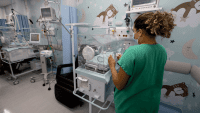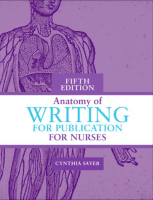Almost 2 years ago, ANA began a journey of transformation. We wanted to make sure that as an organization, ANA continues to be strong, relevant, and more effective than ever before, to support nurses as they face ongoing challenges in their roles and work settings. We also wanted to ensure that ANA can help prepare and position nurses to shape and lead the changes in health care that are coming down the road in ways that benefit our patients and society. We have made steady progress.
As you know, transformation is not a “one-step-and-that’s-it” kind of thing. Rather, true transformation is a process. So with that in mind, let me tell you a little bit about where we are on our journey.
This summer we held our first-ever Membership Assembly with representatives from around the nation, who really took to heart the meeting’s theme, “A Look into the Future: Advancing the Association, Advancing the Profession.” In addition to considering ANA’s governing issues, the Assembly had a new and ongoing goal: to engage in a scan of the nursing and healthcare environment and then advise ANA on how to successfully address current and future trends in these arenas.
Facilitated by futurist John Mahaffie and with the input of other nurses both onsite and via interactive media, assembly representatives tapped into their own knowledge, experience, creativity, and energy to identify the forces that will be at work around us in the next decade. Not surprisingly, technology was identified as a huge driver of our future, including the greater use of telehealth, consumer- and health professional-targeted apps, and robotics. A related trend is the need for nurses to remain vigilant to ensure that technology augments but does not replace the very human nature of our profession.
Still other representatives focused on a future with an even stronger emphasis on ensuring access to care, preventative care, and home-based care. Nurses have huge roles to play—and opportunities to lead—in all these areas. And ANA plans to develop and share more tools and resources to assist nurses in navigating their continually evolving work environments and advocating for policy that enables optimal nursing practice.
Assembly representatives also built on the transformative work that took place last year by agreeing to a timetable to move to a smaller board of directors. And they unanimously approved a structure that acknowledges that RNs who are full members of their constituent or state nurses association are also members of ANA.
Beyond the meeting, I also want to share the progress ANA has made with another change approved last year—the creation of professional issues panels. These panels are designed to help us quickly address emerging issues and provide greater opportunities for more nurses to engage in this vital work. We already have two panels up and running—one on care-coordination quality measures and another on nurse fatigue. A new panel is forming on scope of practice and the barriers RNs still face in their work settings. Nurses interested in serving on this panel can apply at www.nursingworld.org/professional-issues-panels through early October.
The number of nurses willing to bring their voice and expertise to these panels so far has been nothing short of amazing—prompting ANA to create a committee structure with an online component for even greater participation. Their efforts will help us all in our work ahead.
Finally, ANA will continue to transform itself to remain ahead of the curve on issues and the way we work. But our heart and soul will remain the same. We are committed to nurses’ health, safety, and well-being. We are committed to nurses’ being able to provide safe, high-quality care. And we are committed to nurses’ having a strong voice and leading positive changes in their workplace and in the policy arena.
Karen A. Daley, PhD, RN, FAAN
President, American Nurses Association

















